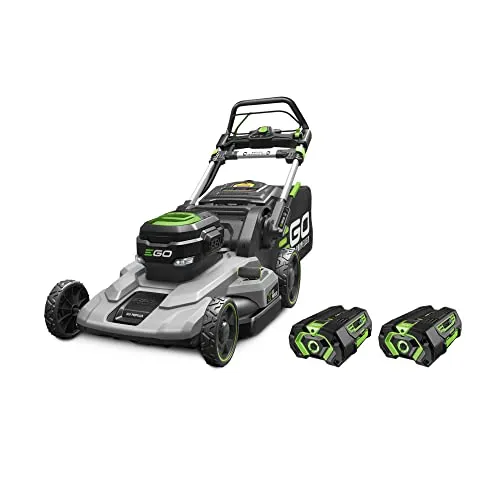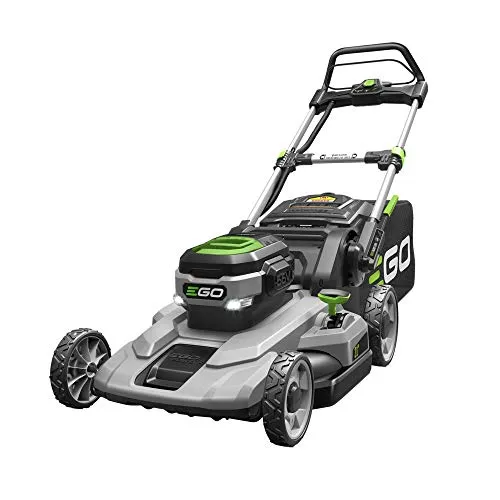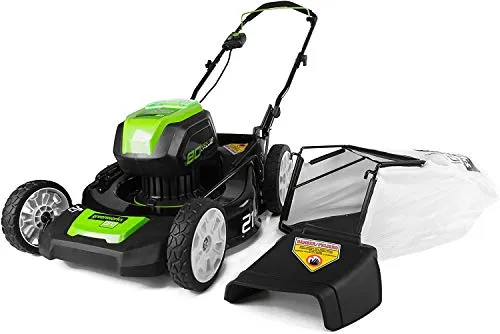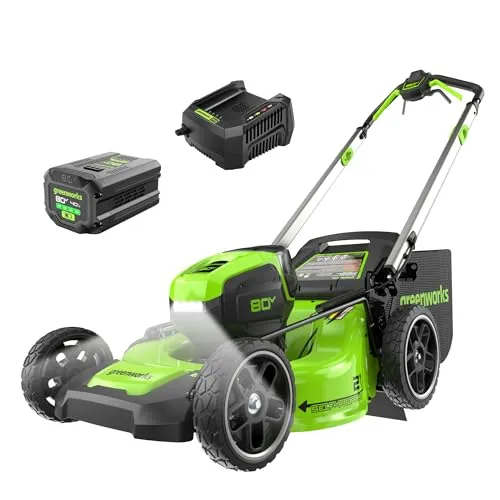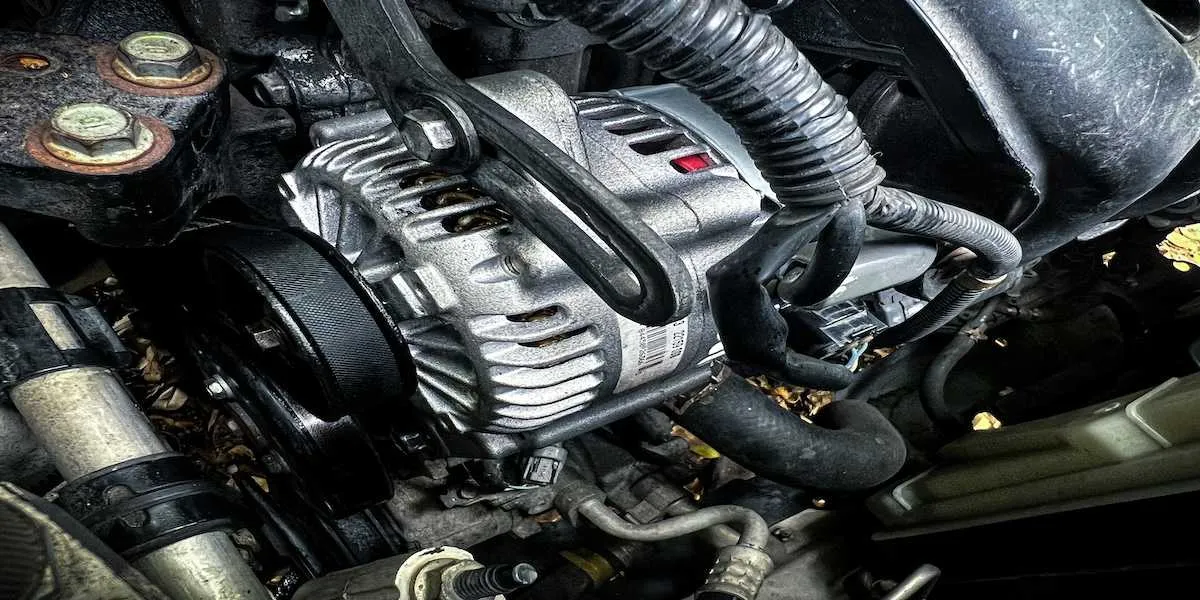Lawn Mower Oil: Everything You Need To Know

Jeffrey Tung on Jan 1, 2024

We earn affiliate commissions at no extra cost to you.
Every part of a lawn mower plays a crucial role, from the handle down to the kind of oil it uses. Lawn mower oil is what keeps the engine running and your lawn mower functional to start with. Not only that, but it also plays a huge part in your lawn mower’s overall health. Refilling your lawn mower with the right type of oil is key to the best performing machine.
For that reason, you should only use oil and products specifically created for the lawn mower model you’re using. Doing so would help prevent engine problems in the long run, which makes for a smoother time taking care of your lawn. To ensure a healthy engine for your lawn mower, always refer to your owner’s manual when in doubt; it should include the type of oil you would need and in which viscosity. These factors and terms will be discussed as you read further!
What kind of oil goes in a lawn mower?
Before we go into what type of oil you should put into your lawn mower, let’s dive deep first into what these are. There are two different types of lawn mower oil with each of its own specifications. You need to take into account the size and type of your mower, and even the climate in which you live in; there are different oils that have their own suggested temperature standards. For instance, if you’re in a place that usually gets to a high temperature, it’s best to pick out a lawn mower oil that can hold out against varying levels of temperature.
Types of Lawn Mower Oil
Not every engine uses a standard oil. Rather, a standard you should take into consideration is the measurement used to rate the engine oil, which is called the viscosity. Engine oil products will have the viscosity number on the packaging. For example, you might see a label that says “10W-40”. The “W” means winter and the number preceding this letter is the rate of the engine oil at 0 degrees Fahrenheit, while the second number is the temperature. The higher this second number is, the less likely it is to thin.
When in doubt, always go back to your lawn mower user manual before making your purchase. Below are the two types of oil and the engine that best suit them that will be discussed in detail:
Small Engine Oil
Engines that are appropriate for this type of oil is called a two-stroke engine. This is a type of engine that manages to complete a power cycle in two strokes, which are up and down movements. This, then, results in a smokier and louder machine as compared to four-stroke engines. Moreover, this means that appliances with an engine like this have the same compartments for both gasoline and oil, hence, the simple power cycle. This requires the owner to mix the oil and gas together in a particular ratio before filling up the engine. To figure out what the right ratio is, it’s best to go back to your user manual.
Two-stroke engines include common power equipment used outdoors such as snowblowers, chainsaws, push mowers, and weed trimmers. In terms of lawn mowers, small engine oil is most commonly suitable for older and smaller push mowers. Although the popularity of such models has decreased over the years, there are still options available for these.
Lawn mowers can either have a two-stroke engine or a four-stroke one. In the case of two-stroke engines, they cannot use motor oil, so they must use small engine oil instead. Because of its design and structure, two-stroke engines require a specific oil to mix in with the gasoline. You need to lubricate this lightweight engine well in order to accommodate its fast-paced movements. Fortunately, the majority of the brands that sell mowers with a two-stroke engine also come with oil products that accompany it as well.
Motor Oil
As compared to small engine oil, motor oil is much suitable for larger motors or four-stroke engines. These are engines that complete the power cycle in four separate strokes, as compared to the two-stroke engine’s compartmentalized process. The four strokes are called intake, compression, combustion, and exhaust. Having this much processes would mean a much higher tendency to a temperature rise. This means that picking the right oil is crucial for these types of engines. Machines that have such specifications typically are automobiles and other lawn mower types such as deluxe push mowers and riding mowers.
As mentioned in the discussion of viscosity in the earlier sections, motor oils require engine oil with high viscosity. Higher viscosity means that it will be able to secure better and generally sustain better lubrication among the parts involved. However, this could mean a more difficult time for you to clean your engine. Your lawn mower may also be more susceptible to damage as the thick oil can clog up the mower. So to answer the question, “Can I use motor oil for my lawn mower?”, the answer would be yes. However, remember to regularly check and change your oil because of its thickness.
Although it is common for motor oil to be used in larger lawn mowers, we still advise you to use it with precaution. There are some models whose parts may be sensitive to the additives in the motor oil you’re using. Again, when in doubt, always check your mower’s manufacturer manual for complete instructions on which one to use. Lawn mowers are a costly investment that you should definitely take care of by using the right tools and products.
Is there a difference between lawn mower oil and car oil?
Lawn mower oil usually comes in the form of small engine oil. It is a common notion that small engine oil and car oil (or regular motor oil) are the same. However, there are certain nuances that make each one unique and have their own benefits. In the case of small engine oils, it usually contains additives that serve as protection while it operates. This matters because you wouldn’t be using your lawn mower every single day, especially if you’re only using it for your yard at home. This means it would just be sitting at your storage for days or weeks. The moment you try starting it back up, it would require a good quality lawn mower oil in order for the dirt and grime to not interfere with its functions.
How to Identify the Lawn Mower or Small Engine Oil Type
After finding out these different kinds of engines and the types of oil that would suit it best, it might start to get a little more difficult in picking what the best is for your own lawn mower. Fortunately, the Society of Automotive Engineers, or the SAE, has come up with a way to categorize the motor oils. This will be the label that indicates the viscosity, or thickness, and temperature in which the engine oil can and should be used. You will be able to see the SAE printed on every packaging of the engine oil products. Not only that, but it will also help you determine if the engine oil is synthetic or not.
Small Engine Oil Type Recommendations
- For warm temperatures (about 40°F and higher), it’s recommended to use the oil of SAE 30.
- For varying temperatures (0 to 100°F), you would use the oil of SAE 10W-30, which is also suitable under cold weather.
- For very cold temperatures (-20 to 120°F), it’s best to use a synthetic oil of SAE 5W-30. This type of oil also helps with lessening the consumption of oil.
- For other colder temperatures (-40°F and below), oil of SAE 5W-30 works best.
- For consistent use (commercial purposes or pressure washing), it’s suggested that you use Vanguard 15W-50 oil.
- Other notes you should remember include synthetic oils as an acceptable and effective type of oil to use at any temperature, and that you should always avoid using special additives.
Briggs and Stratton have developed an interactive oil finder for an easier way to look for the proper small engine oil type you should use for your lawn mower. It would only ask you a few questions, such as in what temperatures are you operating under. You wouldn’t have to input other information, like the engine model number. You can pull up this link before or even during making your purchase for oil. This tool is especially beneficial for those who use small engines. It’s common for most owners to use the wrong type of oil to small engines because of common misconceptions. One of those mistakes includes the use of car oil on small engines rather than its recommended small engine oil.
What oil is best for lawn mowers?
As mentioned earlier, the type of lawn mower oil that best suits your unit depends on a variety of factors, two of which include the general climate of the region you’re in and the suggested grade of the oil as well. Listed below are our top picks for what we think would be the most versatile and high-functioning lawn mower oil for you.
Tools Officials Top Picks for Lawn Mower Oil:
- Briggs and Stratton 100074 5W-30 Synthetic Oil
- Toro 38916 SAE 30 Oil 18 Oz Bottle
- Honda 08207-10W30 PK2 Motor Oil
- Kohler 25 357 05 PK2 Command 10W-30 Oil
- Pennzoil 550034991-6PK SAE-30 Motor Oil
Lawn Mower Oil Change
If you want your lawn mower to be functioning smoothly even as time goes by, learn when and how much you should change its oil. Fortunately, there are some mowers that have a safety switch – when your oil level is low, it won’t start. However, not all mowers are designed the same way. For those who don’t have such a feature, make sure to check your oil levels regularly. Remember, having the wrong oil level can do irreparable damage to your lawn mower; oil levels much lower than what’s required would lead to excessive heat and degradation of its engine.
How do I change my lawn mower oil?
If your lawn mower doesn’t have a safety switch, follow the following steps in order to successfully and safely change oil:
Step 1: Use your lawn mower’s dipstick to check the oil level to start off. The level should appear between the two holes on the dipstick. Overfilling the oil level is just as bad as going under the standard level so always be vigilant when doing this step.
Step 2: Now that you know your oil levels, the next step would be learning how to drain it. There are tools that you can utilize to do this such as a drain plug, dipstick tube, or an oil extractor tool. First, you have to turn on the engine for about 15 minutes in order to heat up the oil. Doing so would remove the dirt and debris from the engine. After the minutes have passed, turn the engine off and disconnect the wire. Drain the gas first from the mower. Then, you can insert your oil extractor tube and start to pump it out. Place the oil in a separate container and set it aside.
Step 3: From this step, you can now replace the old oil with your new one. As another reminder, make sure to pick the lawn mower oil suitable for your unit. After pouring, go back to the first step; use the dipstick to check if you’re at the right oil level. Once it’s at the proper level, it’s a sign that you can now reconnect the wire to the engine.
How often should I change the oil in my lawn mower?
This part of lawn mower maintenance is often overlooked despite that it should be regularly done. It’s not just simply adding more oil to your engine after it’s been used. You have to change everything in order for the lawn mower to run smoothly and not have any internal damage. Lawn mowers usually require a change in oil every 20 to 50 hours after usage. However, it still depends on your lawn mower’s type, model, and engine.
Usually, a new lawn mower would require you to change its oil after five hours of its first use. For relatively older ones, those with smaller motors would need an oil change after about every 25 hours of use. Meanwhile, those with larger motors require an oil change up to 50 hours after its use.
There are many factors that may change the frequency of these oil replacements. Some of which include how rough your yard’s terrain is, the dirt and dust it has accumulated, how frequent you mow wet grass, and the climate in which you’re working as well (hot weather usually makes the lawn mower work twice as hard). The size of your yard is also one of the most important factors. For instance, if you have a large lawn, we recommend that you check your oil level with a dipstick at least after every 20 hours of use, if not regularly. Another factor is the manufacturer’s design as well. There are some mowers that are created with a “no oil change” feature wherein you simply have to add oil instead of changing the entire thing.
When in doubt, go back to your manual and guides for specific instructions.
How much oil does a lawn mower take?
If you can put too little oil in your lawn mower, then it’s also possible that you can have too much of it. The consequence of overflowing your mower with oil includes release of white smoke and oil leakage. You might also experience your engine not starting.
Again, there is no one standard oil level for every lawn mower; it depends on each one’s specifications. However, there are some rough estimates that you can use as a guide when filling up or changing your lawn mower oil. Walk-behind mowers or push mowers would normally require about less than a cup of oil; some may need about 15-18oz of oil, while others may require 20-24oz. Riding lawn mowers, on the other hand, would need a lot more than what smaller mowers require. Although there are a lot of differences among models in this type of mower, generally, riding lawn mowers would need about more than a cup of oil.
To get the specific amount of oil for your particular lawn mower, refer to your manufacturer’s manual or guide.
Wrapping Up
All of this effort into lawn mower maintenance will also manifest in how well its performance will be – it’ll all pay off as you continue to take care of it! A lawn mower that’s running smoothly makes for an easier mowing of grass and the whole yard, giving you more time to actually enjoy your lawn than stressing over it. To reiterate once again, when in doubt, always go back to the owner’s manual to get a more specific guide – what type of oil your lawn mower needs, in which viscosity, how much of it, and how often to change it, they have it!

